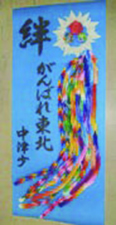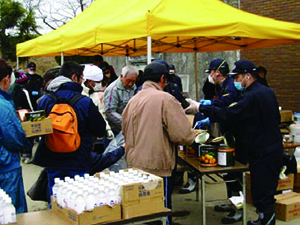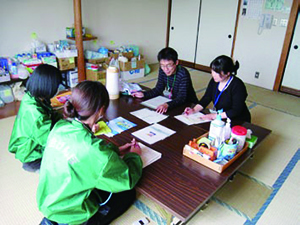Section 3 Conclusion – Toward Social Inclusion of Offenders/Delinquents
As described above the prevention of repeat delinquencies/offenses requires helping the offenders correct their dispositional problems and acquire a sense of self-help as well as providing them with continued multi-layered support at home, school, work, and in their local community, etc. in thereby ensuring their smooth social reintegration back into society and promoting their social adaptation. Towards this, criminal justice institutions, as well as the various institutions involved in welfare, education, labour, and medical care, etc., need to closely cooperate in thereby implementing effective measures and in thus eliminating their problems and supporting their rehabilitation in a seamless and continued manner. These measures, however, can only be effectively implemented with the understanding and cooperation of the regions where the juveniles/young offenders live. In order to stop the advancement of the problems of young offenders that committed delinquencies/offenses and prevent repeat offenses, rather than eliminating them from society, subsuming them again as a responsible member of society is the most important thing. For juvenile/young offenders making the effort “to be rehabilitated,” support from family as well as school, workplace, and the local community, etc. has a significant impact. Relevant institutions should obtain, from the public, the understanding with regard to the importance to support their rehabilitation and cooperation to tackle problems they have.
COLUMN
Disaster victim support activities in correctional institutions after the Great
East Japan Earthquake
The Great East Japan Earthquake, the largest in Japan's recorded history, with the seismic center off the Sanriku coast, took place on March 11, 2011, at 2:46 p.m., with a resulting big tsunami (tidal wave) from the earthquake then hitting the Pacific Ocean coastline and other places in the Tohoku region. This resulted in the enormous amount of damage of over 20,000 dead/missing persons, and also triggered a nuclear power plant accident, etc. Correctional institutions within the region, including penal institutions and juvenile training schools, etc., also suffered damage. Many institutions lost their electricity and other lifelines and had to activate private power generators to secure electricity. Reserved food from a store was supplied to the inmates as meals for the time being. At all the institutions the residential buildings and exterior walls were generally unaffected and no one was injured.
After the Great East Japan Earthquake, juveniles in juvenile training schools nationwide created encouraging works and messages, etc. for the quake-hit areas after thinking that “I want to do what we can do today for the quake-hit areas” and “I want to support juvenile training schools in the quake-hit areas.” The following photographs are part of that. These works were sent to juvenile training schools in the quake-hit areas and were received by juveniles making the effort to be reintegrated back into society in the quake-hit areas as being very encouraging. They were also exhibited at the 53rd CAPIC (Correctional Association Prison Industry Cooperation) exhibition to the general public.
 |
 |
 |
 |
In addition, officials of correctional institutions nationwide also participated in support activities for the disaster victims in the quake-hit areas after the earthquake. District mobile guards dispatched to Ishinomaki Detention Branch to assist viewed the situation where disaster victims were packed into shelters and experiencing a serious shortage of food. They provided disaster victims with urgent support by bringing canned and retort-packed food to the shelters to serve as emergency supplies. This support, as the start, led to Ishinomaki City in Miyagi Prefecture requesting the Ministry of Justice for support in the management of shelters, etc. From late April the same year two officials were positioned at each of the four shelters designated by Ishinomaki City to engage in duties in the shelters, and which included distributing relief goods, serving meals, managing the order of bathing and laundries, and listening to the requests of disaster victims and then providing them to the officials of the local governments. In addition, mental officials of juvenile training schools and juvenile training school officials who were qualified clinical psychologists were dispatched to help in mental consultation activities for disaster victims, etc.
Furthermore, juvenile classification homes, etc. nationwide conducted mental consultation activities at shelters nearby, etc. and telephone consultations and provided advice, etc. to teachers of local elementary schools in cooperation with universities and societies of certified clinical psychologists, etc. based on requests from the local governments. In the area of medical care, medical officials working at correctional institutions were dispatched to provide support, including medical care of disaster victims, etc. Iwate Prefecture requested the support of psychiatric care for children, etc. in Miyako District. After making adjustments to the treatment and medication systems with the relevant institutions, including health and welfare departments/bureaus and medical association of Iwate Prefecture, etc., doctors working at correctional institutions were dispatched once a week for a scheduled period of about one year from June, 2011.
 |
Serving emergency food to disaster victims at Ishinomaki Detention Branch |
 |
Meeting with relevant institutions of mental consultation activities, etc |